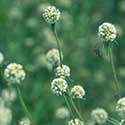Larra bicolor Wasps for Pest Mole Cricket Control
By: Howard Frank, University of Florida, IFAS
 Pest mole crickets cause severe damage to:
Pest mole crickets cause severe damage to:
- A. sports turf and home lawns
- B. pastures
- C. organic vegetable plantings in Florida
In 1988 and again in 1989 the UF/IFAS Mole Cricket Research Program imported Larra bicolor wasps from Bolivia and released them in Alachua County. The idea was that they should spread and provide some level of free biological control of mole crickets.
Well, the population of the wasp has been spreading. Beginning with the established population in Alachua County, it has spread to Putnam, Clay, St Johns, Volusia, Levy and Citrus counties. Eventually, in many years, it should spread everywhere in Florida. But, sightings of the wasps in the above counties were not the result of anybody organizing a program to scout for them.
Additionally, retired Brevard County director Lowell Loadholtz visited Alachua County in 2001, was supplied with wasps (he helped to catch them), took them back to a release site he had prepared in Brevard County, and this year has announced that a population is established That speeds up distribution of the Larra bicolor population and helps to control pest mole crickets first at the release site, and then gradually (as the wasp population spreads) throughout Brevard County
In 2002, David Shibles, extension environmental horticulturist in Polk County, has planned for a release of some wasps there – these are wasps to be caught in Alachua County this fall.
Additionally, extension director Chuck Lippi in Flagler County has started a little program, that takes him very little time, to find out whether the wasp population has spread to his county. I had some potted wildflowers delivered to him at Bunnell. He put them in a place near his office that has bahiagrass and mole crickets. He keeps the plants watered and looks at them from time to time to see whether Larra bicolor wasps are present and feeding on them. (Sunny days near noon are good). The wildflower is Spermacoce verticillata, a plant that we are calling southern Larraflower. If and when he sees Larra bicolor wasps he will try to catch one and mail it to me to confirm its identity. That's all.
Adult Larra bicolor females
feed on nectar to gain energy for flight and
nutrition for egg maturation. L. bicolor adults preferably feed
upon nectar
produced from the wildflower Spermacoce verticillata (southern
Larraflower
or false shrubby buttonweed), so deliberate planting of this
wildflower helps
to sustain year-round L. bicolor populations in Florida.
We hope to start a program like the one at Bunnell in the following counties: Baker, Bradford, Columbia, Dixie, Duval, Gilchrist, Hamilton, Hernando, Lafayette, Lake, Marion, Nassau, Orange, Osceola, Pasco, Seminole, St Johns, Sumter, Suwannee, and Union. I will supply plastic vials to put collected wasps into. The person who delivers the plants will answer any questions.
Some Web sites related to this species are:
- Larra Wasp Tutorial - What the Larra Wasp is and How to Attract it.
- Biological Control of Mole Crickets by Sphecid Wasps
- Larra Wasps - Featured Creatures